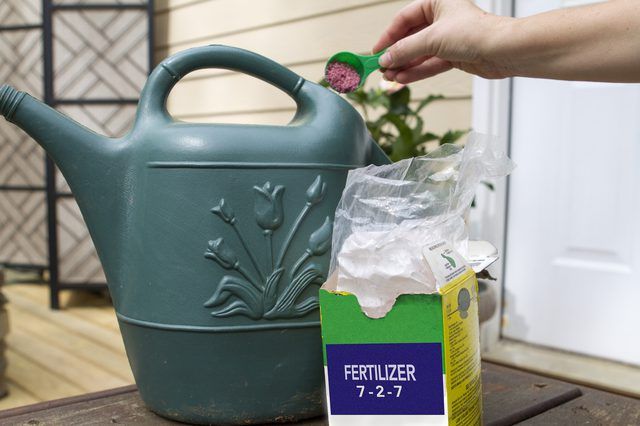Bulbs
Flower Basics
Flower Beds & Specialty Gardens
Flower Garden
Garden Furniture
Garden Gnomes
Garden Seeds
Garden Sheds
Garden Statues
Garden Tools & Supplies
Gardening Basics
Green & Organic
Groundcovers & Vines
Growing Annuals
Growing Basil
Growing Beans
Growing Berries
Growing Blueberries
Growing Cactus
Growing Corn
Growing Cotton
Growing Edibles
Growing Flowers
Growing Garlic
Growing Grapes
Growing Grass
Growing Herbs
Growing Jasmine
Growing Mint
Growing Mushrooms
Orchids
Growing Peanuts
Growing Perennials
Growing Plants
Growing Rosemary
Growing Roses
Growing Strawberries
Growing Sunflowers
Growing Thyme
Growing Tomatoes
Growing Tulips
Growing Vegetables
Herb Basics
Herb Garden
Indoor Growing
Landscaping Basics
Landscaping Patios
Landscaping Plants
Landscaping Shrubs
Landscaping Trees
Landscaping Walks & Pathways
Lawn Basics
Lawn Maintenance
Lawn Mowers
Lawn Ornaments
Lawn Planting
Lawn Tools
Outdoor Growing
Overall Landscape Planning
Pests, Weeds & Problems
Plant Basics
Rock Garden
Rose Garden
Shrubs
Soil
Specialty Gardens
Trees
Vegetable Garden
Yard Maintenance
How to Prune a Hibiscus Plant
How to Prune a Hibiscus Plant. Few plants can top the hibiscus (Hibiscus rosa-sinensis) for large and colorful flowers. A woody shrub that grows outdoors year-round in U.S. Department of Agriculture plant hardiness zones 9 through 11, the hibiscus does well as a houseplant in colder regions. Also called Chinese hibiscus, it's an easy-to-grow plant...
Few plants can top the hibiscus (Hibiscus rosa-sinensis) for large and colorful flowers. A woody shrub that grows outdoors year-round in U.S. Department of Agriculture plant hardiness zones 9 through 11, the hibiscus does well as a houseplant in colder regions. Also called Chinese hibiscus, it's an easy-to-grow plant whose flowers attract hummingbirds and butterflies. Regular pruning helps keep this plant well-shaped and its size under control.
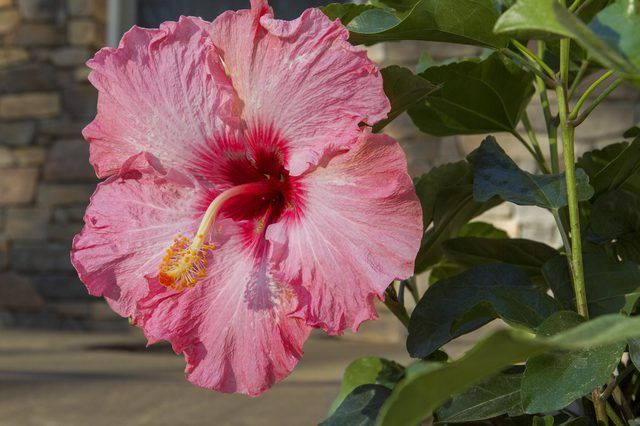
The best time to prune a hibiscus is whenever you expect an extended period of warm weather, which stimulates lush new growth. Because of this, timing depends on how you grow your plant and the climate in your area. If your plant is in the ground and winter freezes are rare or nonexistent in your area, prune in late fall, to promote root growth during winter, followed by new top growth when spring arrives. If you experience some winter frost, wait until spring to prune, so freezing temperatures won't damage new growth. For a potted hibiscus that you overwinter or grow year-round indoors, you can prune in the fall and allow new growth to develop indoors during winter. But for any indoor- or outdoor-grown plant that needs hard pruning to bring its size under control, only do this in spring to minimize stress and give the plant the best chance for strong new growth.
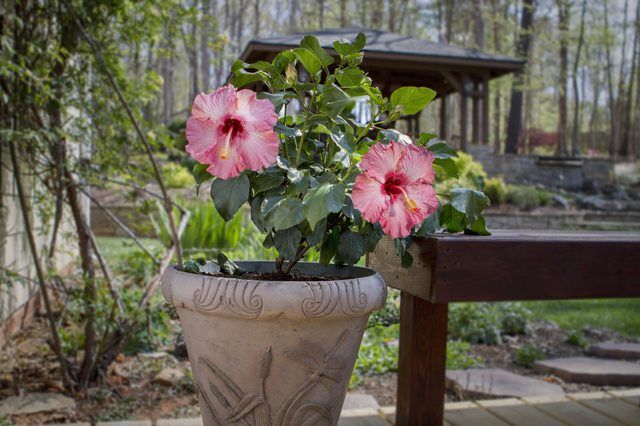
A hibiscus plant can live for up to 20 years and flowers on new growth, with buds forming on the end of each branch. Regular pruning can help keep it healthy and in good condition, while stimulating new side branches to ensure a heavy bloom. Each year, trim back the previous season's growth by about one-third, and also remove any thin, leggy shoots the are crowded by other stems. During the growing season, pinch back the tips of stems when their flowers fade, to keep new shoots and lots of flower buds coming while maintaining an extra-bushy appearance. Regular pinching and trimming is especially important for a potted, indoor-grown plant because it also helps keep its size under control and minimizes the need to repot.
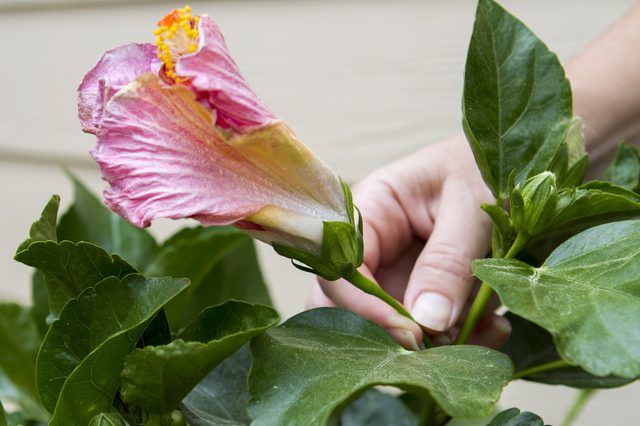
Use a pair of sharp pruning shears to trim your hibiscus, wiping the cutting surfaces thoroughly with rubbing alcohol between each cut to prevent spread of plant diseases. New growth starts just behind each cutting point, so examine each branch and make a cut just above a leaf node, or "eye," that points in the direction you want to see new growth. For example, cut in front of outward-facing nodes to promote a wider, more spreading shape and inward-facing ones to promote a shape that's more narrow and erect. Make slanted cuts, each about 1/4 inch ahead of the leaf node, and avoid stripping bark off the branch. For an older plant with bare, leafless branches, cut these back to leave three or four nodes to stimulate new growth near the plant's base, but reserve several well-leafed, unpruned branches that are at least 1 foot long, to help the plant recover.
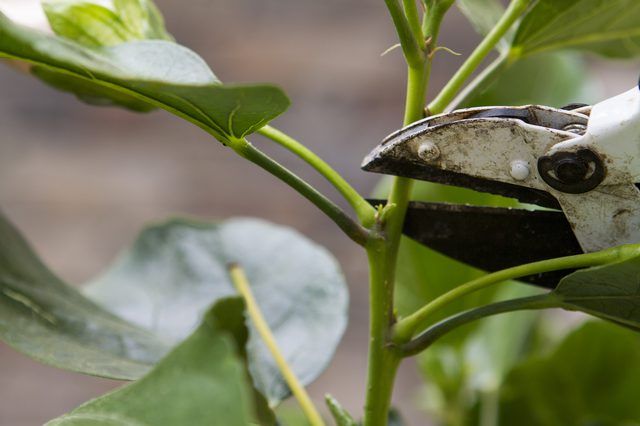
Once you've pruned your hibiscus plant, keep it well-watered to promote strong new growth. Water whenever the top inch of soil feels dry to the touch, and if it's a potted plant, allow the pot to drain thoroughly after watering, never leaving it in a water-filled saucer that promotes soggy, overly wet soil. Once the plant starts to put out new growth, feed it every two weeks with a water-soluble fertilizer such as a 7-2-7 formula, diluted to half-strength, or 1/4 teaspoon per 2 gallons of water, but check your product label for further directions. Aphids are soft-bodied pests that may attack tender new growth; if you see these, spray the plant until dripping with insecticidal soap, diluted at a rate of 6 tablespoons per gallon of water, and repeat the treatment every two weeks, as needed.
